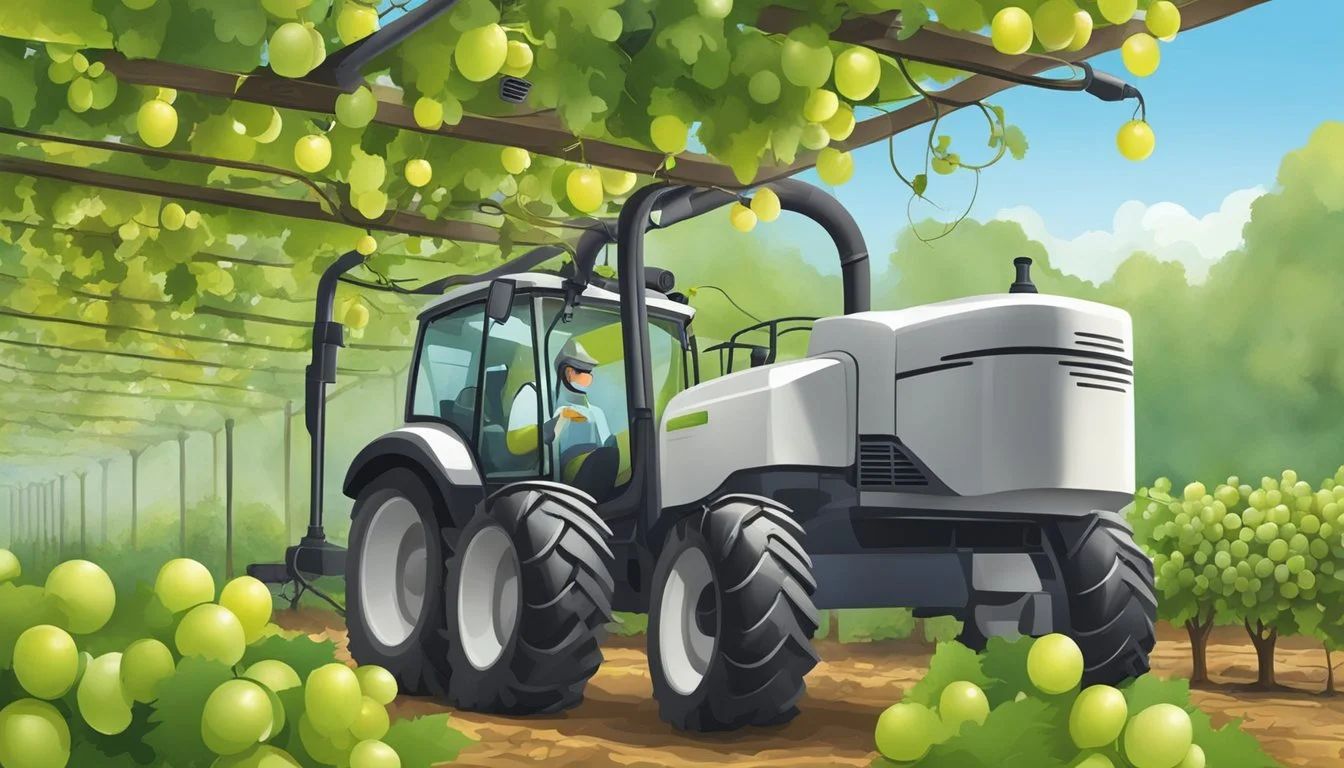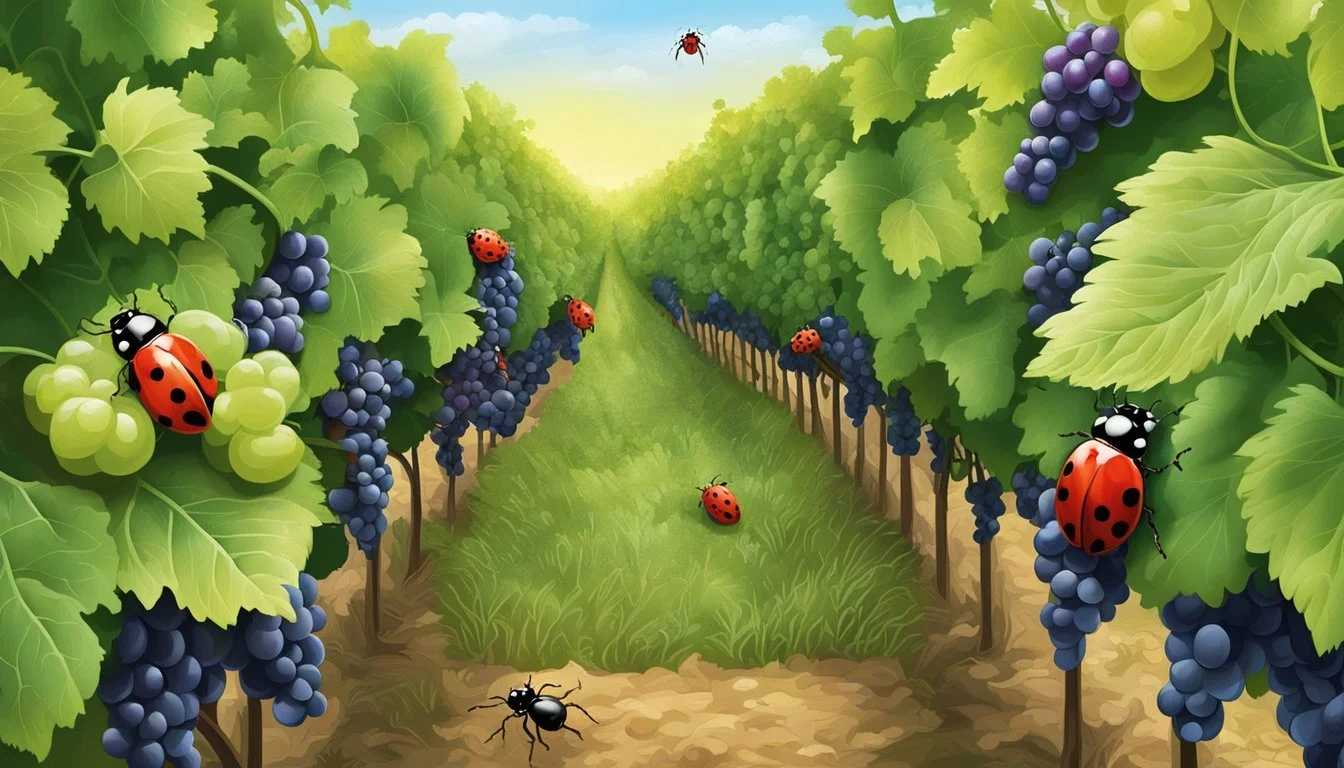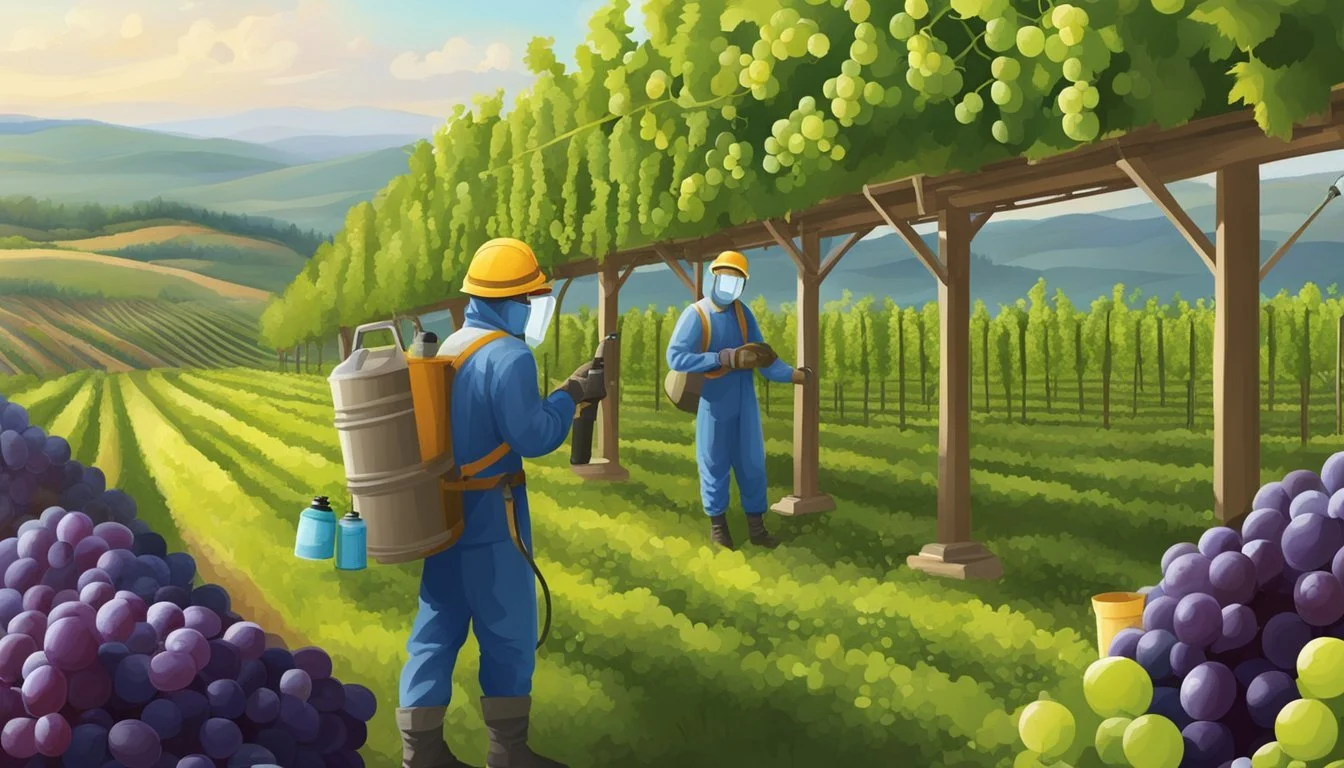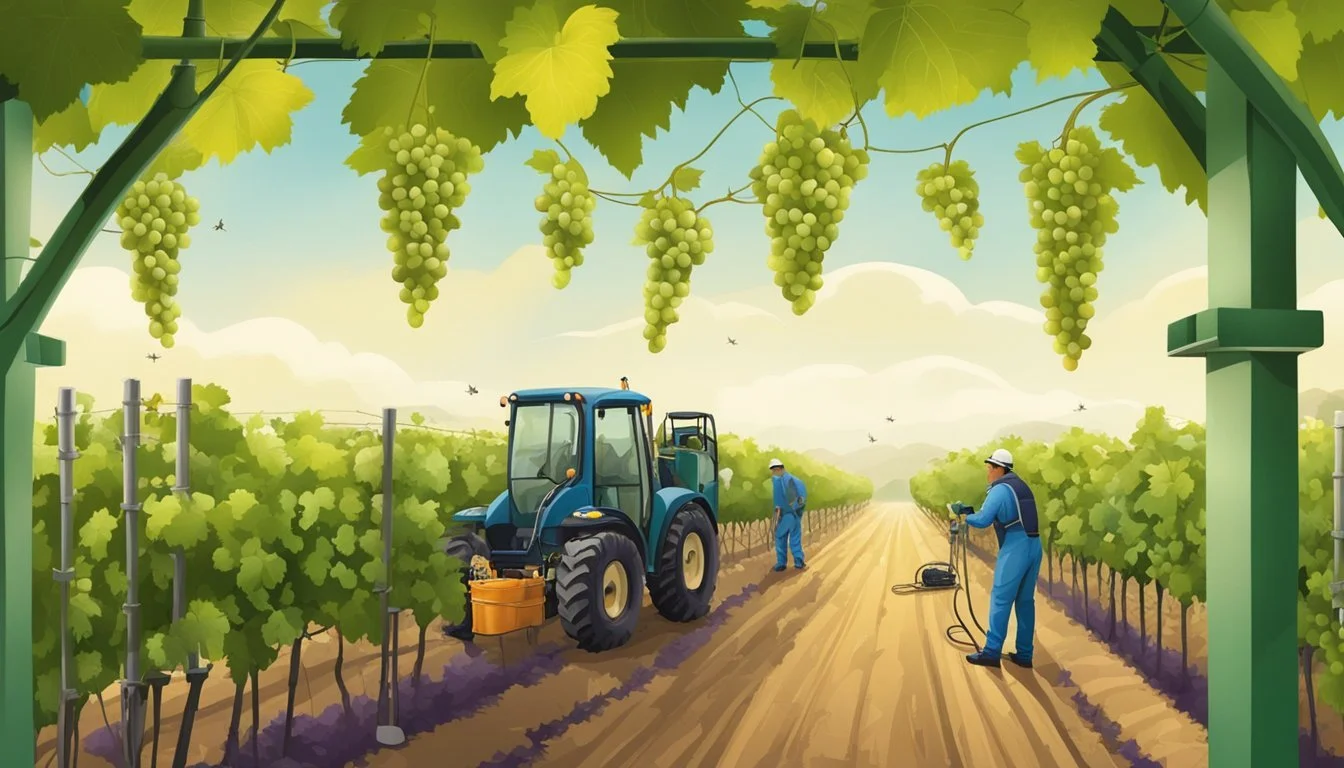Pest Control for Grape Vineyards
Integrated Management Strategies
Grape vineyards depend heavily on effective pest management to ensure healthy vines and high-quality fruit production. Given the variety of pests that can afflict vineyards, from insects to diseases, a robust integrated pest management strategy is essential. This strategy often includes monitoring pest populations, understanding the impact of local ecosystems on pest prevalence, and selecting appropriate control methods, whether they are cultural, biological, or chemical. Controlling pests in vineyards not only helps maintain grape quality but also safeguards the vineyard's long-term sustainability.
Implementing pest management in vineyards requires a knowledge base of the pests prevalent in the region, as well as their life cycles and the damage they can cause. Vineyard managers must often decide between immediate control measures and longer-term solutions that may involve altering the vineyard habitat or releasing biological control agents such as Mealybug Destroyers and Anagyrus Wasps. These decisions should be informed by current research and be compliant with regulatory standards, ensuring both the safety of the crop and the environment.
Vigilant monitoring and timely intervention are fundamental aspects of vineyard pest control. Techniques and tools for pest management are regularly updated based on the latest research and technology advancements. Vineyard owners and managers often refer to region-specific guidelines like those provided by Cornell University for the most effective and sustainable methods of pest control in grape cultivation. By staying informed and proactive, they can effectively manage pests to produce high-quality grapes while minimizing harm to the ecosystem.
Understanding Vineyard Ecology
Vineyard ecology is a complex interplay between the physical environment, grapevines, and the diverse organisms that inhabit or interact with the vineyard. This balanced ecosystem is critical for cultivating healthy grapes and managing pests effectively.
Importance of Location and Soil
Selecting the right location and understanding the soil are crucial for a successful grape vineyard. The soils must provide adequate drainage while retaining necessary nutrients. Certain soils, such as those with a balance of clay, silt, and sand, often lead to the best grape production.
Climatic Factors Affecting Vine Growth
Climate plays a pivotal role in vine growth, with variables such as temperature and summer fog influencing the vineyard's microclimate. Growing degree days are a measure of heat accumulation used to predict plant developmental rates including grapes.
Vineyard Development and Structure
Vineyard development requires thoughtful planning regarding row orientation and vine spacing. This structure directly impacts sun exposure and air flow around the grapevines, influencing grape growing and health.
Roles of Sunlight and Water in Vine Health
Sunlight is essential for photosynthesis, while water, often supplied through consistent irrigation, is necessary for vine metabolic processes and nutrient uptake. Managing these elements is fundamental in vineyard ecology for maintaining vine health.
Supporting Biodiversity and Natural Predators
Encouraging biodiversity can enhance biological control efforts. By supporting natural enemies to pests, such as predatory insects, vineyards can reduce the need for chemical interventions.
Cultural Practices in Vineyard Management
Cultural practices, such as tillage, cover crops, and selective cultivation, can significantly affect vineyard health. These methods can improve soil structure, reduce pest populations, and increase the environmental sustainability of the vineyard.
Influence of Vine Variety on Pest Control
The grape varieties selected can have a notable impact on pest control. Some varieties are more resistant to specific pests and diseases, which can be a factor in vineyard establishment and maintenance.
Understanding Grape Lifecycle
A thorough understanding of the grape lifecycle from bud break to harvest is imperative for aligning pest management practices with the different growth stages of the grapevines. This knowledge enables growers to implement timely and effective interventions.
Integrated Pest Management (IPM)
Integrated Pest Management (IPM) is a comprehensive strategy that minimizes damage from pests while reducing the reliance on chemical pesticides. Grape growers employ IPM to tackle common vineyard problems effectively and sustainably.
Principles of Integrated Pest Management
IPM is founded on rigorous knowledge of pest life cycles and the way they interact with the environment. This approach promotes the long-term prevention of pests or their damage through a combination of techniques such as biological control, habitat manipulation, and cultural practices. It requires understanding the ecosystem in your vineyard and making decisions based on scientific research.
Scouting and Monitoring for Pests
Regular scouting and monitoring are the cornerstones of IPM, providing the necessary information on pest presence and activity levels. Vineyard managers inspect for various pests, insects, mites, birds, and animals that may affect grape production. Effective monitoring tools include pheromone traps for insects and regular vine checks for signs of disease.
Thresholds and Treatment Decisions
Treatment decisions within IPM are based on action thresholds, which define the point at which pest populations or environmental conditions indicate that pest control action must be taken. These thresholds are essential to avoid unnecessary or untimely applications of pesticides and to use them only when they are likely to be most effective.
Biological Control Methods
IPM encourages the use of natural predators and parasitoids as biological control agents. These natural enemies can be crucial in the management of grape pests. Providing habitats for these beneficial organisms, like insect hotels or maintaining cover crops, supports their populations in the vineyard.
Cultural Control Techniques
The manipulation of vineyard cultural practices is an effective component of IPM. Techniques such as crop rotation, sanitation, and the management of canopy and water can create unfavorable conditions for the development of pests. Weed control and the use of cover crops can also play significant roles in preventing pest problems.
Mechanical and Physical Controls
Mechanical and physical controls encompass traps, barriers, netting, and flaming to manage or exclude pests. The use of such methods can be highly effective and are often combined with other types of control within an IPM program to increase the overall effectiveness of pest management.
Chemical Control with Pesticides
When other IPM strategies are insufficient to manage pest populations, the judicious use of chemicals is considered. This may include the use of insecticides, fungicides, herbicides, and other pesticides. Careful selection and timing of applications are necessary to maximize efficacy and minimize impact on non-target organisms and the environment.
Pest Identification and Life Cycles
Effective pest management in grape vineyards starts with a thorough understanding of the pests involved, their life cycles, and the damage they can cause. This section will focus on the identification and life cycles of the major pests including insects, mites, animal and aviary visitors, weed species, and beneficial organisms that play a role in pest control.
Major Insect Pests and Diseases
Grape vineyards are host to a variety of insect pests and diseases that can significantly impact crop yield and quality. Mites such as the grape leafhopper exemplify insects causing pervasive damage through leaf feeding, leading to vine stress and reduced photosynthetic capability. Nematodes, microscopic worms, also present a threat by feeding on grape roots, thus impairing plant growth.
Disease agents like powdery mildew and downy mildew thrive in specific environmental conditions and can rapidly colonize grape leaves and fruit, whereas black rot targets developing berries, resulting in mummified fruit.
Common Animal and Bird Pests
Among the animal world, birds, deer, field mice, voles, gophers, and raccoons are known for causing damage in vineyards. These animals partake in feeding on grape clusters or bark and can introduce diseases through their activities. Birds, in particular, prey on ripe grapes, reducing yield and potentially spreading bunch rot.
Weed Species and Management
Weeds compete with grapevines for resources, which can reduce growth and fruit quality. Weed management is thus crucial, and can include mechanical control, the use of herbicides, or a combination of methods. Identifying weed species early is key to implementing an effective control strategy, balancing between aggressiveness and preserving vine health.
Identifying Beneficial Organisms
Biological control relies on natural enemies or predators living in the vineyard ecosystem. These beneficial organisms help suppress pest populations. A well-planned hedgerow can attract and sustain a variety of predators, providing a natural form of pest management by targeting harmful insects and mites, without the collateral damage associated with broad-spectrum herbicides.
Vineyard Management Practices
Effective vineyard management practices are essential for maintaining healthy vines, optimizing grape quality, and ensuring sustainable operations within the vineyard. From controlling the microclimate around the grape clusters to managing soil and water efficiently, each aspect contributes to the prevention of pest infestations and the proliferation of diseases.
Canopy Management for Healthier Vines
Canopy management is pivotal for controlling the vineyard's microclimate. Proper leaf removal and canopy thinning allow sunlight penetration and air movement, reducing the risk of fungal diseases. Growers should adhere to strategic guidelines that optimize canopy density, enhancing grape exposure and promoting fruit quality.
Soil Health and Nutrient Management
Soil is the foundation of a vineyard's health. Soil management aims to maintain balance by providing essential nutrients without over-fertilization. Regular soil testing is a must to ensure nutrient levels are optimal for grapevine growth.
Water and Irrigation Management
Precise water management is vital, and irrigation systems should be tailored to meet the specific water needs of grapevines, avoiding both over and under-watering. Irrigation scheduling based on vine water needs supports vine health and can help manage vine stress.
Sustainable Weed Management Strategies
Effective weed management is tailored to the types of weeds present, whether they are perennial weeds like bermudagrass and field bindweed, or annual weeds like horseweed. Non-chemical methods, such as cultivation and the use of flamers, can be effective in managing vineyard weed populations.
Use of Cover Crops and Mulches
Cover crops and mulches serve multiple purposes, from managing soil erosion to improving soil health and water retention. Types of mulch like straw or hay can also be deployed to suppress weed growth and act as a habitat for beneficial insects.
Cultural Practices to Deter Pests
Incorporating cultural practices such as crop rotation, sanitation, and the selection of pest-resistant vine varieties can greatly deter pests. Strategic vineyard management can help minimize the need for chemical interventions while promoting a balanced ecosystem.
Pesticide Selection and Use
In the context of grape vineyard management, selecting the right pesticides and using them effectively are critical steps for sustainable pest control. A sound strategy accounts for environmental impact, resistance management, while ensuring pest management objectives are met.
Choosing Appropriate Pesticides
When it comes to pest management in vineyards, growers should select pesticides that specifically target their pest challenges. Herbicides, fungicides, and insecticides should be chosen based on their efficacy for the particular pests and diseases identified. Growers should refer to management guidelines which often include thorough databases of pest-specific products. For instance, products containing glyphosate may be effective for weed management, but their use must be carefully timed and applied.
Application Timing and Techniques
Precision in pesticide application is essential. The effectiveness of pest control often depends on applying pesticides during a pest's most vulnerable stage. Adhering to labeled rates and timings, such as during pre-bloom for some fungicides, ensures not only control of pests but also helps in reducing the risk of pesticide runoff. Techniques such as spot treatments rather than uniform applications can be more targeted and thus reduce overreliance on chemicals.
Resistance Management and Alternatives
A critical aspect of pest control is managing resistance to pesticides. Pests can develop resistance to pesticides over time, rendering them less effective and necessitating the use of higher doses or more toxic alternatives. Employing a rotation of chemicals with different modes of action, alongside biological control methods like the introduction of Anagyrus Wasps for vine mealybug control, can help mitigate this risk.
Understanding Environmental Impacts
The environmental impact of pesticide use cannot be overstated. Responsible pest management includes considering the potential effects of pesticides on non-target organisms, waterways, and soil health. Practitioners should always follow label directions closely and look for products that offer a lower environmental burden, ensuring that they meet both pest management goals and sustainability standards.
Regulatory and Advisory Framework
The regulatory and advisory landscape for grape pest management in California vineyards integrates compliance with state agricultural regulations, insights from certified pest control advisors, and research-based guidelines from the University of California’s Agriculture and Natural Resources department. These components collaboratively ensure that vineyard pest management practices meet legal standards and embody the latest scientific understanding.
Compliance with Agricultural Regulations
California grape growers are bound by stringent agricultural regulations that dictate the responsible use of pesticides and other pest management approaches. Compliance ensures the protection of the environment, farm workers, and consumers. These regulations are enforced by both state and federal agencies, requiring vineyard managers to adhere to practices that minimize risk and environmental impact.
Role of Pest Control Advisors
Certified pest control advisors (PCAs) play a critical role in the management of vineyard pests. They offer specialized knowledge in diagnosing and controlling pest issues within the framework of Integrated Pest Management (IPM). PCAs in California must be licensed by the Department of Pesticide Regulation and provide science-based recommendations that comply with current management guidelines.
University Research and Guidelines
The University of California provides research-based management guidelines through its Agriculture and Natural Resources division. It produces extensive material on effective pest management practices tailored to the unique climatic and ecological conditions of California vineyards. These guidelines are not only informed by the latest scientific research but also by the practical experience of grape growers and PCAs.
Future Trends in Vine Pest Management
The landscape of vine pest management is poised to evolve substantially, with integrated pest management (IPM) principles at the forefront. In the continual quest to maintain eco-friendly and sustainable practices, growers are showing a penchant for leveraging biological controls. For instance, the implementation of natural predators like Mealybug Destroyers and Anagyrus Wasps has shown promise in managing the Vine Mealybug, a notably stubborn pest.
Research and technological advancements are expected to refine IPM protocols, making them more precise and tailored to specific vineyard environments. Innovations in monitoring and data analysis will likely allow for more targeted pest control interventions. This will not only reduce reliance on pesticides but also enhance the effectiveness of pest management strategies.
Habitat management is also an emerging trend within vine pest management, as it fosters environments conducive to pest predators and creates ecological barriers to pests. The push towards resistant grape varieties and the modification of cultural practices are anticipated to gain traction, further fortifying strategies against pest invasions.
Most notably, precision agriculture technologies such as drones and sensor networks are poised to transform the pest management landscape. They offer a new level of precision in monitoring pest populations and vine health, leading to timely and judicious application of control methods.
Embracing these future trends will require a robust extension of knowledge and resources to vine growers. Engagement with agricultural scientists and technologists will be crucial in shaping progressive, sustainable pest management strategies for vineyards.
Conclusion
Effective pest management in vineyards is a multifaceted approach that ensures the health and productivity of grapevines. Integrated Pest Management (IPM) strategies are recommended, employing a combination of methods that prioritize environmental sustainability and efficacy. These strategies include:
Biological Control: Utilizing beneficial organisms, such as Mealybug Destroyers and Anagyrus Wasps, to naturally reduce pest populations.
Cultural Practices: Modifying vineyard conditions to deter pests and reduce their impact on grapevines.
In regions like California, pest management follows ecologically-based principles, aiming for a balance that reduces reliance on chemical pesticides. The use of resistant grape varieties and habitat management forms a defense line against common vineyard pest issues.
For small-scale vineyards, pest control measures need to balance insect damage with the tolerance levels of grapevines, focusing intervention only when the threat to foliage or fruit becomes significant.
It is important for vineyard managers to stay abreast of the latest developments and recommendations, which can include annual guides on pesticide selection and safety tips (Michigan State University). Incorporating these practices not only protects the current year's crop but also plans for future seasons, ensuring long-term sustainability and success of the vineyard.
Frequently Asked Questions
Proper pest management ensures the health and productivity of grape vineyards. These frequently asked questions address common concerns.
How can I safely protect my grape vines from common pests?
They can utilize an integrated pest management approach, incorporating strategies like biological control, cultural practices, and the use of selective pesticides to reduce pest impact while minimizing harm to the environment.
What are the most effective pesticide options for grape vineyards?
The most effective options depend on the specific pests and diseases present. Growers are advised to consult resources such as the 2023 Pest Management Guide for Wine Grapes in Oregon for recommendations on appropriate pesticide application rates and timing.
Which homemade remedies are recommended for treating bugs on grape vines?
Simple homemade remedies like diluted dish soap sprays can sometimes manage soft-bodied insects like aphids. However, for more severe infestations, it is advisable to investigate scientifically-backed options.
How frequently should vineyards spray their grapes for pest prevention?
Spraying frequency should be based on the pest's life cycle, vineyard monitoring outcomes, and environmental conditions, ensuring treatments coincide with critical periods in pest development.
What are the best natural pest control methods for grape vineyards?
Natural pest control methods include introducing beneficial insects, employing mechanical traps, and using botanical insecticides. These strategies can be integrated into the vineyard's overall pest management program.
What is the recommended use of neem oil for pest control in grape vineyards?
Neem oil is a natural pesticide that can be used to control a variety of vineyard pests. It is important to follow the label instructions for dilution rates, application frequency, and safety precautions to avoid harming beneficial insects and plants.






